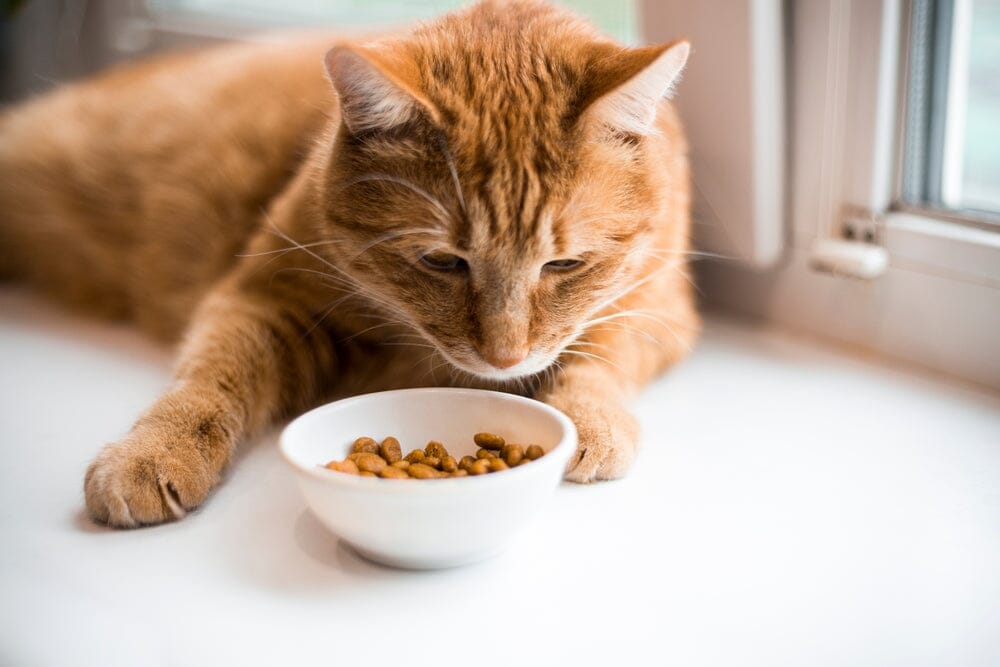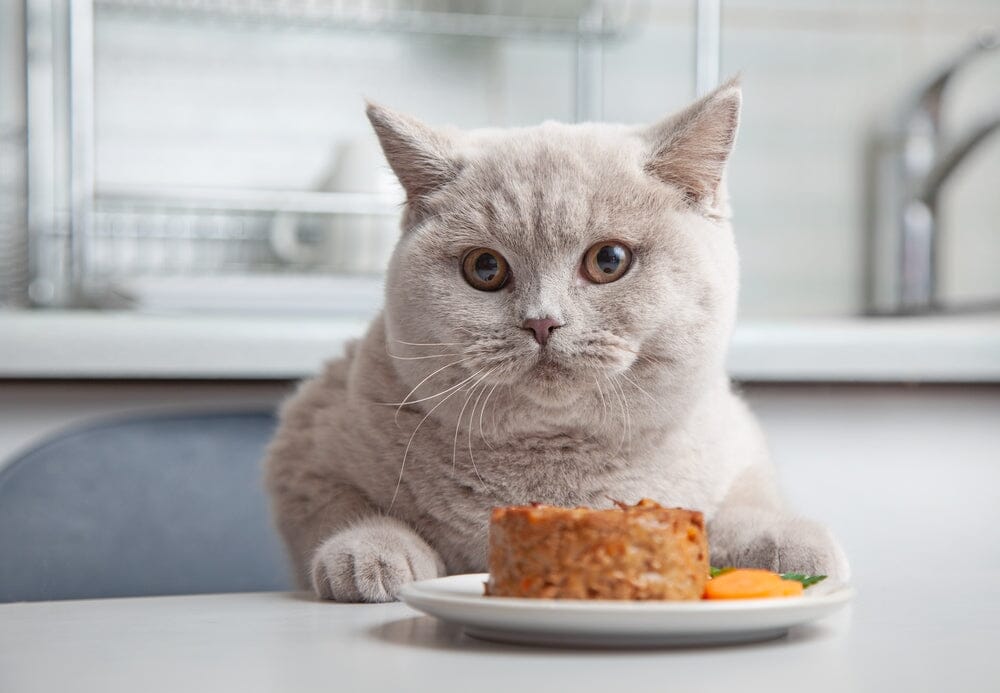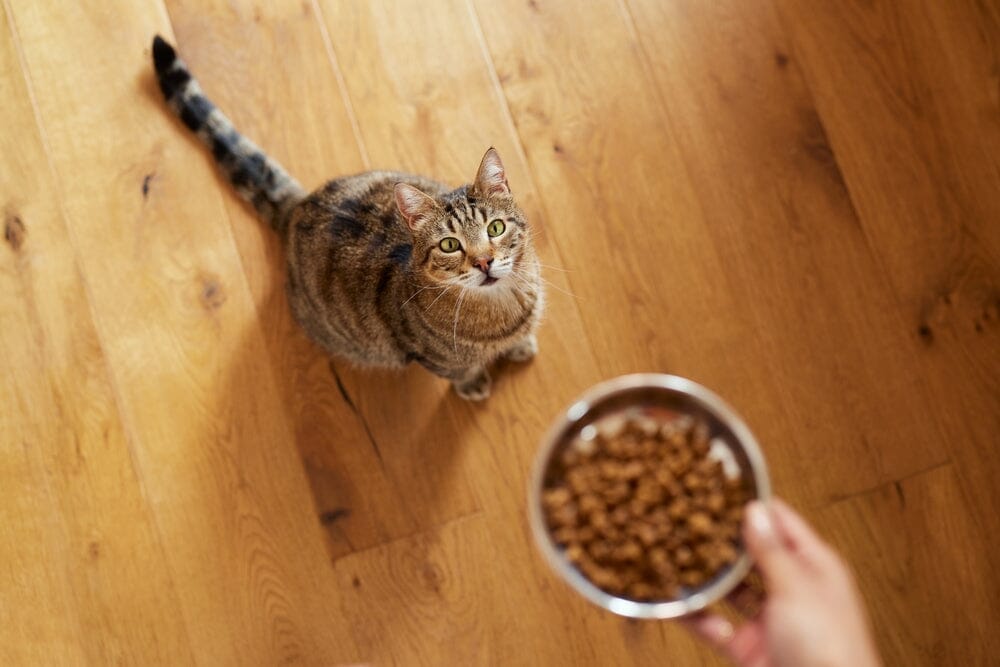July 29, 2022 |11 min read
Top 4 Common Cat Dental Diseases

Your feline friend may be a whiz when it comes to cleaning themselves, but there’s one place that they can’t quite get to. Yes, even the cleanest and most agile kitties can’t maneuver a toothbrush, making dental diseases in cats a widespread problem.
If you’re curious to learn how to clean your cat’s teeth or want to learn more about the most common cat dental problems, this is your go-to guide.
Together, we’ll explore causes, symptoms, and diagnoses, as well as solutions to keep your cat’s mouth healthy. From gum disease to tooth resorption, there’s a lot to learn about cat dental disease. It’s time to get the facts to keep your furry friend feeling their best.
#1. Gingivitis
It’s estimated that up to 85% of cats aged three and older deal with dental diseases, and for many cats, their dental issues begin with gingivitis. That’s right, the same pesky gum issues that bother humans are common in our feline companions as well.
What is gingivitis? If you’ve been lucky to avoid the unpleasant condition throughout your life, here’s a look at the basics:
- Bacterial buildup – Commonly referred to as “gum disease,” gingivitis typically causes redness, swelling, and irritation of your cat's gum tissue. As filmy, bacterial plaque builds up around the gums and teeth, bacteria may begin to seep into the point where teeth and gums meet—known as the gingiva.
- Immune response – Gingivitis isn’t just the buildup of plaque and bacteria, it’s actually the immune response to this phenomenon. Once bacteria enter the gums, your feline friend's immune system will begin fighting off the infection. The resulting inflammation is caused by your cat’s disease-fighting antibodies.
- Tartar accumulation – As plaque continues to accumulate around the teeth and gums, it may begin to calcify and solidify into tartar. While plaque is a filmy, fuzzy buildup of bacteria, tartar is a rough, solid compound that can lead to increased bacterial growth and further dental issues.
Fortunately, gingivitis is a reversible condition and, with the proper treatment, you as their cat parentcould minimize the negative effects of this pervasive dental problem.
Cat Litter That Prioritizes Their
Health & Your Happiness.
for 20% Off + a FREE Catnip Toy
#2. Stomatitis
Often confused with gingivitis, stomatitis can result in inflammation and discomfort for your cat. Notably, stomatitis is a more serious condition than gingivitis. The painful symptoms of this oral health disease can make it hard for your cat to eat or groom themselves.
The difference between stomatitis and gingivitis lies in the following factors:
- Generalized inflammation – Gingivitis specifically refers to inflammation of gum tissue, while stomatitis can result in inflammation throughout your cat’s entire mouth, including the lips, tongue, palate, and inner lips, as well as gums.
- Excessive salivation – Another sign of stomatitis is drooling. While dogs are known to be on the slobbery side, cats are typically more restrained with drool. That said, the pain and inflammation caused by stomatitis could cause your cat to have a harder time chewing, swallowing, and holding onto its saliva.
- Underlying health problems – While gingivitis and other common dental diseases can usually be traced back to hygiene, the precise causes of stomatitis are unknown. That said, stomatitis is an immune system response and could be related to other underlying health conditions.
#3. Periodontal Disease
If left untreated, gingivitis will likely result in periodontal disease. Your cat may have both gingivitis and periodontal disease simultaneously, and these diseases may be more advanced in some areas of the mouth than others. These diseases are directly correlated, but there are also notable distinctions between the various stages and levels of severity.
Periodontal disease is a degenerative condition and, as it progresses, it could result in permanent, irreversible health effects. There are also four distinct stages of periodontal disease, including:
- Stage 1 – Gingivitis is considered the first stage of periodontal disease. We’ve already covered gingivitis in-depth, but it's important to note that during this stage there’s no separation between tooth and gum, just redness and inflammation.
- Stage 2 – At this stage, bacteria and plaque have entered gum tissue and begun to destroy bone tissue. This is the beginning stage of permanent bone loss. Cats who have lost 1-25% of a tooth's bony root are considered to be in stage 2 of periodontal disease.
- Stage 3 – After losing 25-50% of the bone supporting the tooth root, your cat will require medical intervention to save their tooth. Known as stage 3 dental disease, cats will need to undergo bone and tissue regeneration to avoid a permanent extraction.
- Stage 4 – If the disease progresses to its fourth and final stage, extraction will be the only option left to avoid further infection and illness. With more than 50% of the tooth root compromised, keeping the tooth could lead to frequent infection and compounding health problems.
#4. Tooth Resorption
Exterior bacteria isn’t the only threat to your cat’s pearly whites. Interior tooth structures and tissues can be broken down and destroyed. It’s estimated that more than 70% of cats over the age of five may exhibit signs of tooth resorption. Without treatment, this condition can lead to permanent tooth loss.
The most common symptoms of tooth resorption include:
- Pinkish marks on gums – What could look like gingivitis or general inflammation may actually be the exterior sign of tooth resorption. Look for a pink-colored defect at the point where the tooth and gums meet.
- Behavioral changes – If your cat is hiding in uncommon places, acting odd around food, or behaving more aggressively, dental issues may be to blame. Behavioral changes are often a clear sign that something is wrong internally. Cats can be moody by nature, but if you’re seeing a noticeable change in their behavior, it could be their way of telling you that they’re in pain.
The precise cause of tooth resorption is contested by veterinary experts. There are several theories, though none have been agreed upon. That said, there appears to be a link between tooth resorption and periodontal disease.
How Are Dental Diseases Diagnosed?
It’s not always easy to pinpoint dental problems in cats on your own. Sure, you as a cat parentmay notice a bad odor in their breath and observe more extreme side effects like weight loss, behavioral changes, and drooling. But cats can be quite adept at hiding their health issues, and even the most attentive owner can miss the common signs and symptoms.
If you’re worried that something is amiss with your pet, you might need to visit your local vet. Typically, they’ll go through the following screening processes:
- Physical exams – Your cat might dread seeing the vet, but a close-up physical exam is usually enough to pinpoint dental problems. A vet will look for the common signs of dental disease and may be able to gauge the severity or progression of a condition based on visual clues.
- X-rays – If your vet is concerned about bone resorption or bone erosion, they may order X-rays to get a clear picture of the issue. Your cat will likely need anesthesia and sedation to proceed with the X-rays, but the procedure itself is relatively short and painless.
- Further testing – Underlying health issues could play a role in your cat's dental health. If your vet is concerned about additional health measures or your cat's viability for surgery, they may request additional testing. Blood tests, urine, or stool analysis could help your vet pinpoint the root cause of the issue.
How to Treat and Prevent Dental Diseases in Cats
Dental problems in cats may be prevalent, but that doesn’t mean there’s nothing you can do about it. Don’t let the facts deter you from taking a proactive approach to your cat's health. After all, many dental problems are completely preventable if action is taken at an early stage.
How can you make a positive impact on your cat’s teeth? Consider the following ways to keep your cat's smile healthy:
- Home-health routines – Looking for home remedies for cat dental problems? Here’s a simple one—grab a toothbrush. The best thing you can do for your cat’s teeth is to brush them. Be mindful of how hard you brush, and never use a human toothbrush or standard toothpaste. Make sure all your dental cleaning accessories are kitty-approved and are specifically designed to target your cat’s oral health.
- Professional cleanings – If you’re feeling a bit squeamish around your cat’s teeth, you can book a professional cleaning appointment. Most veterinary offices provide teeth cleaning services—this may be the best option for older cats or those already dealing with some dental issues.
- Preventative care – As with most health concerns, the earlier you can intervene, the better. Regular checkups and veterinary exams are a crucial part of dental disease prevention. Ensure you see your vet at least once per year for a standard exam.
- Tooth extractions – As mentioned, if left untreated, dental disease can erode tooth roots, leaving your cat’s teeth rotted and prone to infection. Tooth resorption and stage 4 periodontal disease may necessitate tooth extractions. Fortunately, cats can thrive without their teeth and live long, happy lives with standard diets.

Tired of your
home smelling like
you have a cat?
Use code PRETTYBLOG
Track Your Cat’s Health with PrettyLitter
With a little knowledge about the most common cat dental disease, you’re better prepared for whatever comes your way. Plus, by keeping up with treatment and prevention methods, you can ensure your cat is always living their best life.
If you’re committed to staying on top of your cat’s overall wellness, PrettyLitter can help you do just that.
As one of the best litter for kittens and cats, there’s no comparison to PrettyLitter. It’s a moisture-absorbing, odor-trapping, easy-to-scoop solution that cats love too. In addition, our color-changing formula alerts you to potential health risks immediately, providing everyday assurance and important insights into your cat’s health.
Ready to give it a try? Get started with a personalized PrettyLitter plan today.
Sources:
Fetch by Web MD. What to Know About Dental Problems in Cats. https://pets.webmd.com/cats/what-to-know-about-dental-problems-in-cats
Cornell Feline Health Center. Feline Dental Disease. https://www.vet.cornell.edu/departments-centers-and-institutes/cornell-feline-health-center/health-information/feline-health-topics/feline-dental-disease
VCA Hospitals. Gingivitis and Stomatitis in Cats. https://vcahospitals.com/know-your-pet/gingivitis-and-stomatitis-in-cats
Pet MD. Stomatitis in Cats. https://www.petmd.com/cat/conditions/mouth/c_ct_stomatitis
SACVDS. Periodontal Disease in Cats. https://www.sacvds.com/forms/Periodontal-disease-cats.pdf
Cornell Feline Health Center. Tooth Resorption. https://www.vet.cornell.edu/departments-centers-and- institutes/cornell-feline-health-center/health-information/feline-health-topics/tooth-resorption








